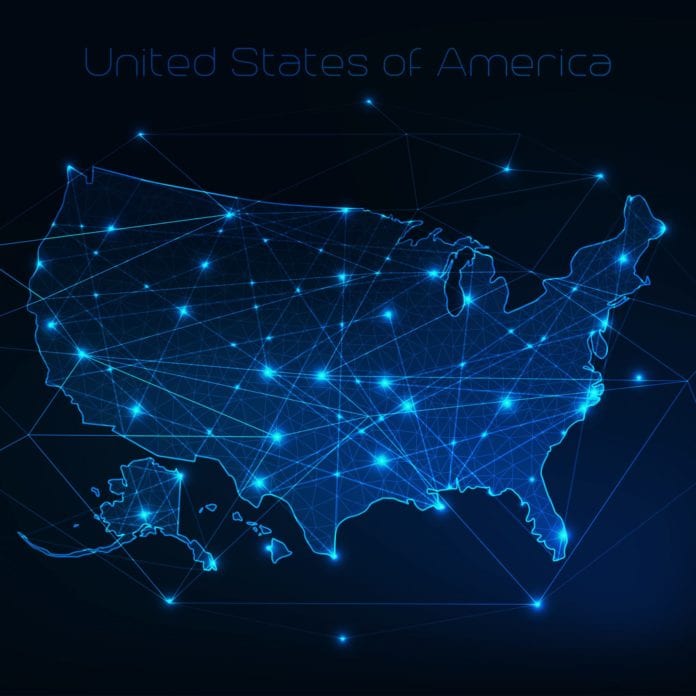As $42.5 billion in federal funding makes it way to the states to be translated into infrastructure deployment projects, Ookla recently assessed how the 50 U.S. states stand in terms of delivery of broadband speeds.
Ookla examined its Speedtest data for broadband services in terms of the percentage of Speedtest users in a state who experienced at least 100 Mbps downlink/20 Mbps uplink speeds—the Federal Communications Commission’s new minimum standard for broadband. That standard was upgraded earlier this year from the previous standard of 25/3 Mbps, which had been in place for nearly a decade.
The company used Ookla Speedtest data from the first half of 2024.
States with the highest percentage of users seeing ‘broadband’ speeds
Among the top five states, most were relatively small Northeastern states. The state of Connecticut had the highest percentage of Ookla Speedtest users, 65.8%, experiencing network speeds of at least 100/20 Mbps. Maryland (63.7%), Delaware (63.3%) and Rhode Island (62.7%) rounded out the top five spots. But North Dakota was a successful outlier: a geographically large and mostly rural state that came in with the second-highest percentage of Speedtest users getting 100/20 Mbps speeds, at 65.5%.
“While comparing small, densely populated states with larger, sparsely populated states may seem unfair, we thought it was important to note the current performance of each state so we can track their progress in future reports,” Ookla noted in its blog post on the analysis.
The next four states with the highest percentage of Speedtest users who received at least the FCC minimum broadband speeds were Tennessee (62.2%), Utah (61.8%), New Hampshire (60.5%) and Virginia (60.1%).
However, it should be noted that even in these best-performing states, roughly 40% of Speedtest users didn’t get 100/20 Mbps speeds.
States with jumps in 100/20 Mbps broadband percentages, and the deepest digital divides
Ookla also compared its data from the first half of 2024 with the same time period last year, looking at how percentages fared in that year. Of particular note: New Mexico saw a 50% jump in the percentage of its population with access to the FCC’s minimum broadband speeds of 100 Mbps/20 Mbps; Arizona saw a 45% increase.
Another seven states—Nevada, Minnesota, Colorado, Washington, Oregon, Wyoming, Maine and Utah—saw 30% or more improvement in the reach of 100/20 Mbps received speeds during that 12-month time period.
Meanwhile, Ookla declared that the states with the “most prominent” digital divides were the states of Washington, Alaska, Illinois and Oregon, where the network testing and analysis firm found the largest gap between the percentage of urban Speedtest users and rural Speedtest users who received 100/20 Mbps.
California, North Carolina BEAD plans approved
BEAD-funded projects are largely still in the planning phase and aren’t affecting deployments just yet—that is expected in 2025 and beyond as the states distribute the funds according to their approved plans.
Meanwhile, the Biden administration approved two more state Broadband Equity, Access and Deployment (BEAD) plans, those of California and North Carolina, last week.
California will receive $1.8 billion in broadband funding, while North Carolina—which had digital and physical infrastructure devastated by flooding from Hurricane Helene—will receive more than $1.5 billion in federal funds.
The approvals mean that those two states can request access to the allocated funding and begin implementation of their BEAD programs.

